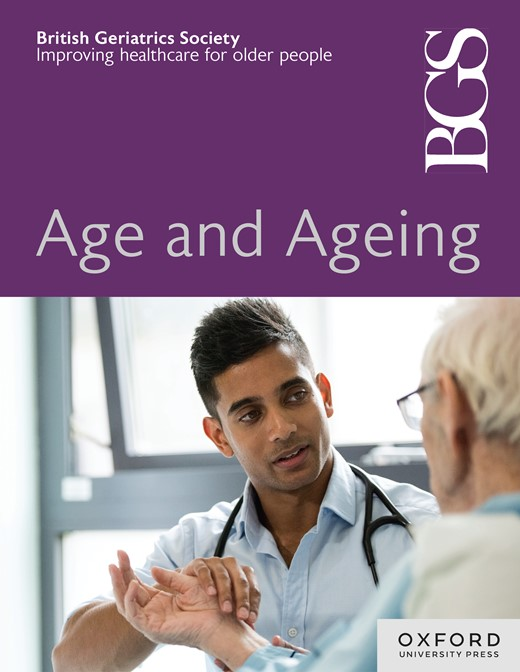3083 Improving post-fall care for inpatients at North Middlesex University Hospital
IF 6
2区 医学
Q1 GERIATRICS & GERONTOLOGY
引用次数: 0
Abstract
Aim We aimed to improve the assessment, documentation, and management of inpatient falls by introducing a memorable CARE poster and promoting the use of a digital falls proforma for both nurses and doctors. This initiative aims to standardise practices and enhance patient safety. Method Cycle 1: Initial data revealed poor documentation of falls, with missing elements such as Clinical Frailty Scale (CFS) scoring, medication review, pain management, and lying/standing blood pressure (LSBP) measurement. These critical aspects were incorporated into the CARE poster. Cycle 2: The CARE poster and digital falls proforma were launched, accompanied by brief training sessions on the geriatric ward. These sessions encouraged resident doctors to prescribe analgesia and supported comprehensive documentation. We audited falls documentation before and after the intervention to evaluate improvements in recording relevant data. For the next cycle, we aim to engage a broader audience, including all medical and surgical teams, by conducting face-to-face campaigns and distributing email reminders. The focus will be on ensuring doctors and nurses complete every section of the proforma. Conclusion The CARE poster and digital falls proforma have significantly improved falls documentation, ensuring the inclusion of critical elements like LSBP, blood sugar checks, and thorough physical examinations. It also highlights key management steps, such as requesting investigations, prescribing analgesia, and reducing polypharmacy. Our project demonstrated a 40% improvement in LSBP documentation and medication review. However, analgesia care improved by only 2%, despite 85% of post-fall patients sustaining injuries. Further education for doctors and nurses is needed to address this gap. Currently in its third cycle, this QIP continues to evolve, with ongoing implementation and a planned audit. We are optimistic that it will enhance clinical practice and uphold our trust’s core value: putting the patient first.3083 .改善北米德尔塞克斯大学医院住院病人的跌倒后护理
我们旨在通过引入令人难忘的CARE海报和促进护士和医生使用数字跌倒形式,改善住院患者跌倒的评估、记录和管理。这一举措旨在使做法标准化并加强患者安全。方法周期1:初始数据显示跌倒记录不佳,缺少诸如临床虚弱量表(CFS)评分、药物回顾、疼痛管理和躺/站立血压(LSBP)测量等元素。这些关键方面都被纳入CARE的海报中。第二周期:发布CARE海报和数字跌倒形式,同时提供关于老年病房的简短培训课程。这些会议鼓励住院医生开镇痛药,并支持全面的文件。我们在干预前后审核了跌落文件,以评估在记录相关数据方面的改进。对于下一个周期,我们的目标是通过开展面对面的宣传活动和发送电子邮件提醒,吸引更广泛的受众,包括所有医疗和外科团队。重点将是确保医生和护士完成形式表格的每个部分。CARE海报和数字跌倒形式显著改善了跌倒记录,确保了包括LSBP、血糖检查和彻底的身体检查等关键因素。它还强调了关键的管理步骤,如要求调查、开止痛药和减少多药。我们的项目显示在LSBP文件和药物审查方面有40%的改善。然而,尽管85%的跌倒后患者持续受伤,但镇痛护理仅改善了2%。为了解决这一差距,需要对医生和护士进行进一步的教育。目前已进入第三个周期,该QIP在持续实施和计划审核中不断发展。我们乐观地认为,它将加强临床实践,并坚持我们的核心价值:把病人放在第一位。
本文章由计算机程序翻译,如有差异,请以英文原文为准。
求助全文
约1分钟内获得全文
求助全文
来源期刊

Age and ageing
医学-老年医学
CiteScore
9.20
自引率
6.00%
发文量
796
审稿时长
4-8 weeks
期刊介绍:
Age and Ageing is an international journal publishing refereed original articles and commissioned reviews on geriatric medicine and gerontology. Its range includes research on ageing and clinical, epidemiological, and psychological aspects of later life.
 求助内容:
求助内容: 应助结果提醒方式:
应助结果提醒方式:


